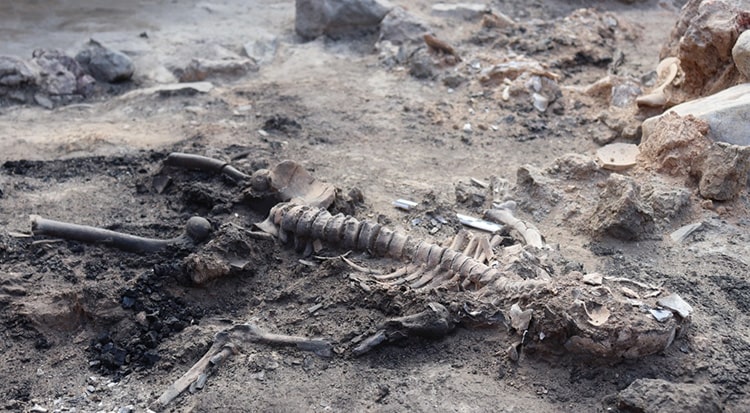
Archaeologists discovered brain and skin remnants belonging to two individuals who couldn’t escape their collapsed homes 3,700 years ago
Archaeologists have discovered brain and skin remnants belonging to two individuals who perished 3,700 years ago in the collapsed houses at Tavşanlı Höyük excavations.
The exciting discovery was announced during a presentation by the experts of the Tavşanlı Höyük excavation at the 29th European Association of Archaeologists Congress held in Belfast, the capital of Northern Ireland, from August 30th to September 2nd.
Tavşanlı Mound, also known as the heart of Kütahya due to its heart-shaped appearance in aerial shots, is located in the district of Tavşanlı in Kütahya, Türkiye.
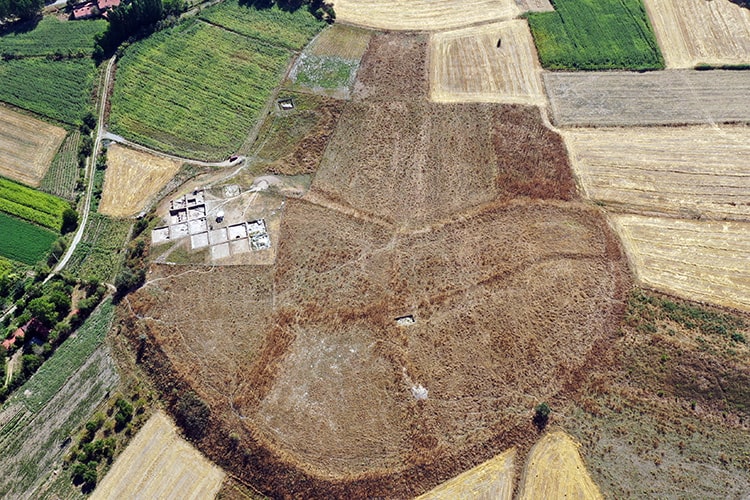
In the presentation prepared by the excavation director, Prof. Dr. Erkan Fidan, who is also the Department Head of Archaeology at Bilecik Şeyh Edebali University, and the deputy director of the excavation, Dr. Nihan Naiboğlu, who is an Assistant Professor at Nişantaşı University, it was stated that Tavşanlı Mound, with its 8,000-year history, is the oldest settlement in Kütahya and one of the largest Bronze Age settlements in Western Anatolia, covering an area of 45 hectares. It was also mentioned that Tavşanlı Mound was likely the capital of the region, suffered a major attack around the 1700s BCE, and the entire city was burnt and destroyed.
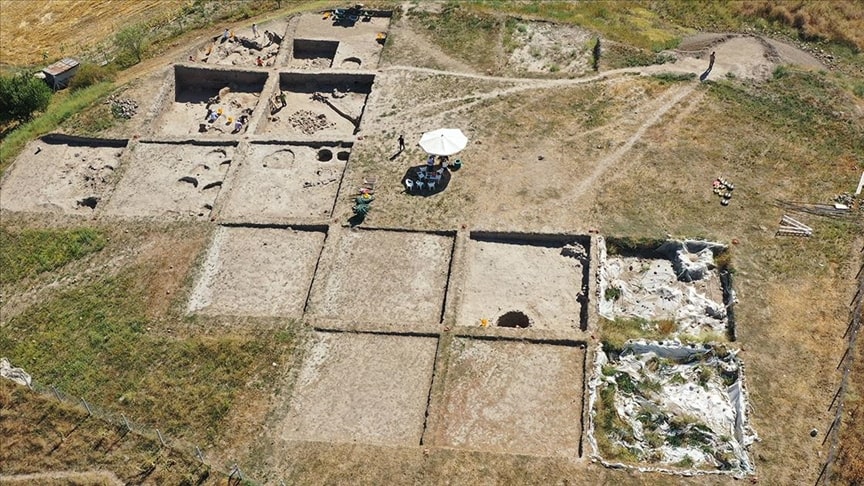
Fidan and Naiboğlu said, “We found skeletons belonging to a male aged 15-18 and another male aged 40-45, who was approximately 130 centimeters tall. The skeletons were discovered beneath the collapsed wooden beams and house debris in the room, indicating that they had fallen from a wooden shelf.”
The presentation conveyed that the older individual likely couldn’t escape and was found in the middle of the room, while the younger one was assessed to have been on the verge of exiting through the door when the collapsing debris trapped them. It was suggested that the city, which was probably destroyed as a result of a sudden attack on the settlement, had a vulnerability on its northeastern edge where people couldn’t escape from their homes, as indicated by the findings.
In his presentation, Prof. Dr. Yılmaz Selim Erdal, the Head of the Department of Anthropology at Hacettepe University’s Faculty of Literature, reported that the skeletons he excavated and examined had been exposed to very high temperatures and intense fire. He mentioned that due to this, the brain inside the skull of the young individual had been carbonized and preserved until today.
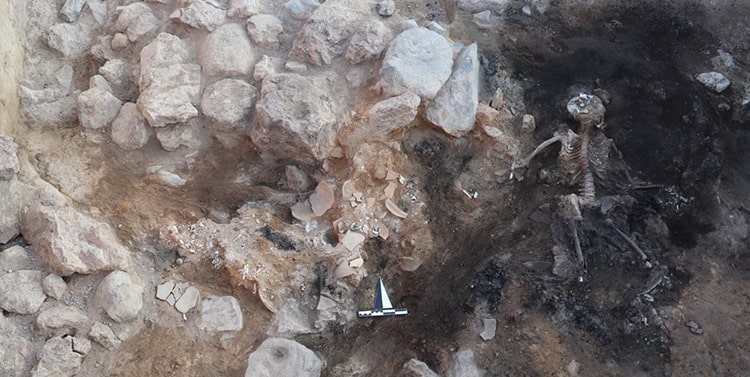
Another striking piece of information in the report was the discovery of carbonized pieces of the individual’s own skin between the chest and abdomen of the young individual.
It was emphasized that while there have been very few instances of brain remnants found in excavations conducted in Anatolia, the presence of carbonized human skin is considered “the first and only example found in archaeological periods in Turkey,” making it highly significant.
Fidan “The reasons for the attack and who carried it out will be investigated.”,
Kazı Başkanı Prof. Dr. Erkan Fidan told an AA reporter that with the recent findings, they have determined that the entire city, which they refer to as the “Colonial Age,” was burnt and destroyed in a major attack towards the end of that era.
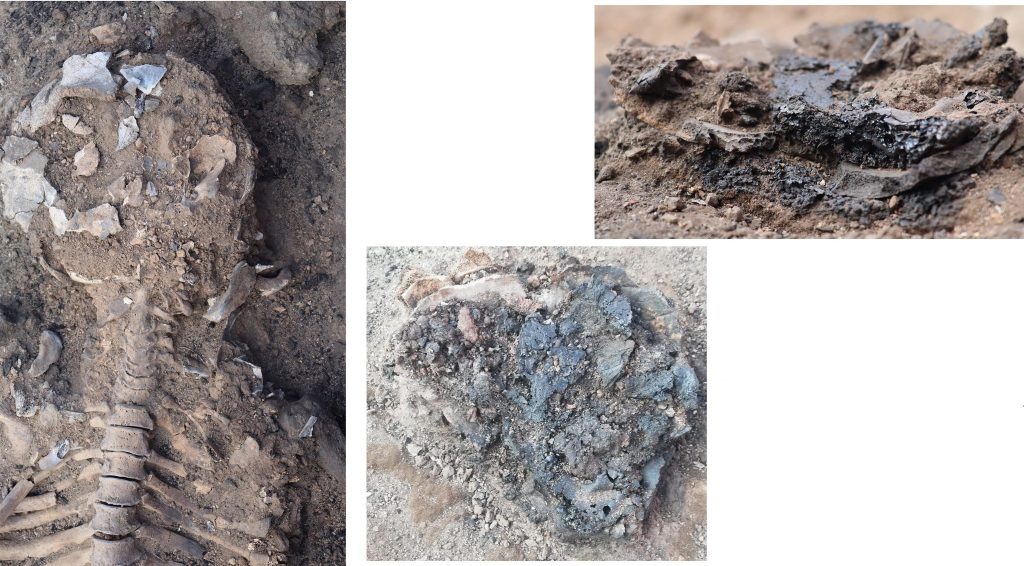
Fidan, stating that they will now seek clues about the reasons behind this major attack and who was responsible, said, “In the excavations of a structure belonging to this large fire layer, we understood that dozens of earthenware pots fell to the center of the room under the mudbrick and wooden debris of the structure. We found the remains of two individuals. The man in his 40s had a shelf fallen on top of him in the center of the room, while the young man in his 15-18s, unfortunately, got trapped under the collapsed debris just two steps away from the door.”
Fidan, explained that they have preserved and protected the brain inside the skull of one of the human remains, which had been carbonized and survived until today, indicating that it had been exposed to very high temperatures and intense fire. He added, “This is significant because only 4-5 such examples are known in Anatolia.”
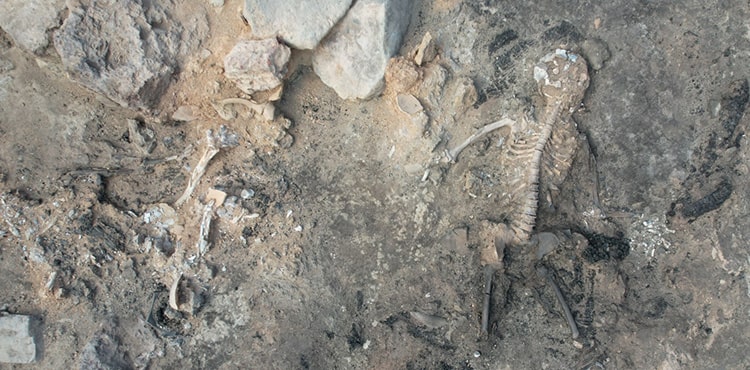
Fidan, providing information that the skeleton remains of the younger individual were found very close to the entrance of the structure, explained that this suggests the young person likely tried to escape but was unsuccessful.
He continued by noting that, compared to the other skeleton, the young individual’s remains had been exposed to much higher temperatures, causing the bones to appear bleached due to the intense heat.
“However, this situation has led to an exceptionally rare and significant discovery. Soft tissue, or ‘human skin,’ between the abdomen and chest of the skeleton was documented as carbonized and preserved. This finding stands out as a very important occurrence, something we are not accustomed to seeing outside of the context of mummification. The example of human skin carbonized on a skeleton is unprecedented in Anatolia and holds great importance as the first known instance.”
Cover Photo AA
You may also like
- A 1700-year-old statue of Pan unearthed during the excavations at Polyeuktos in İstanbul
- The granary was found in the ancient city of Sebaste, founded by the first Roman emperor Augustus
- Donalar Kale Kapı Rock Tomb or Donalar Rock Tomb
- Theater emerges as works continue in ancient city of Perinthos
- Urartian King Argishti’s bronze shield revealed the name of an unknown country
- The religious center of Lycia, the ancient city of Letoon
- Who were the Luwians?
- A new study brings a fresh perspective on the Anatolian origin of the Indo-European languages
- Perhaps the oldest thermal treatment center in the world, which has been in continuous use for 2000 years -Basilica Therma Roman Bath or King’s Daughter-
- The largest synagogue of the ancient world, located in the ancient city of Sardis, is being restored











Leave a Reply